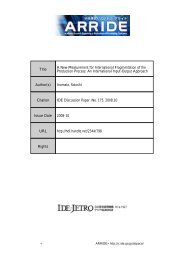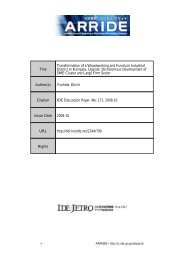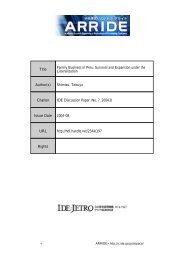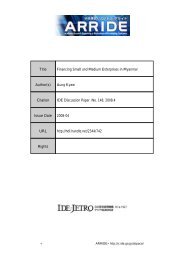Title Sustainable Development and Poverty Reduction under ...
Title Sustainable Development and Poverty Reduction under ...
Title Sustainable Development and Poverty Reduction under ...
- No tags were found...
Create successful ePaper yourself
Turn your PDF publications into a flip-book with our unique Google optimized e-Paper software.
Earlier studies on poverty in Egypt (Table 1) show that the poverty level increased from1981/82 to 1990/91 in both rural <strong>and</strong> urban areas regardless of the level of incidence ofpoverty used by the author. However, from 1990/91 to 1995/96, namely the ERSAP period,significant disagreement appeared between authors in erms of the trend <strong>and</strong> level of povertyincidence. In urban areas, poverty increased. However, in rural areas, it either increased ordecreased, depending on the study.An early study (UNDP <strong>and</strong> INP [1996]) estimated the food-based poverty line for1995/96 at LE3184 per household <strong>and</strong> LE594 per capita, <strong>and</strong> the cost of basic needs (lowerexpenditure poverty line) at LE4186 per household <strong>and</strong> LE814 per capita. According to thefurther study, the incidence of poverty increased in urban areas from 20.3% to 22.3%, <strong>and</strong>decreased in rural areas from 28.6% to 23.3% between 1991 <strong>and</strong> 1995. This contrastreflected mobility from rural areas to urban areas <strong>and</strong> worsening employmentcircumstances in urban areas. At the same time, to analyze this phenomenon, severalstudies were conducted on the effects of ERSAP on poverty. Some argued that ERSAPmight adversely affect the income distribution 10 .In addition, <strong>Poverty</strong> Assessment Surveys, 43% of the respondents reported animprovement in their living conditions, whereas 57% experienced either no change (21%),or deterioration (36%). However, only 23% of the poor replied that their living st<strong>and</strong>ardshad improved over the 1991-1996 period, as compared with more than double thatpercentage for the non-poor (50%). This analysis reveals that the burden of the ERSAP fellmore heavily on the poor (UNDP <strong>and</strong> INP [1996]). The general economic condition <strong>and</strong>10 See Korayem [1996], who concludes that ERSAP had negative impacts on employment8


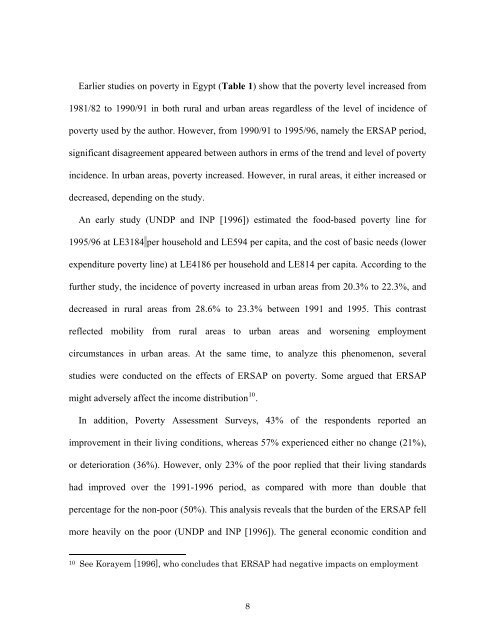

![Title [書評] 廣田義人著『東アジア工作機械工業の技術形成 ... - ARRIDE](https://img.yumpu.com/47139953/1/184x260/title-arride.jpg?quality=85)


